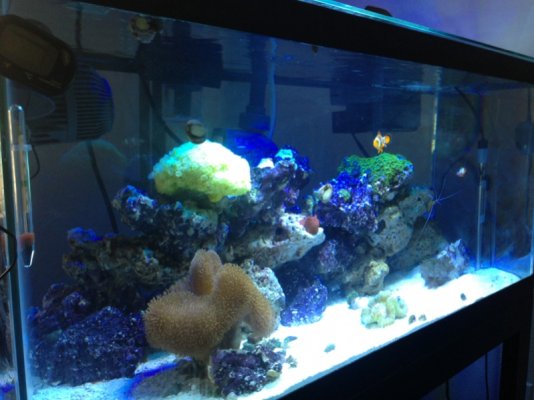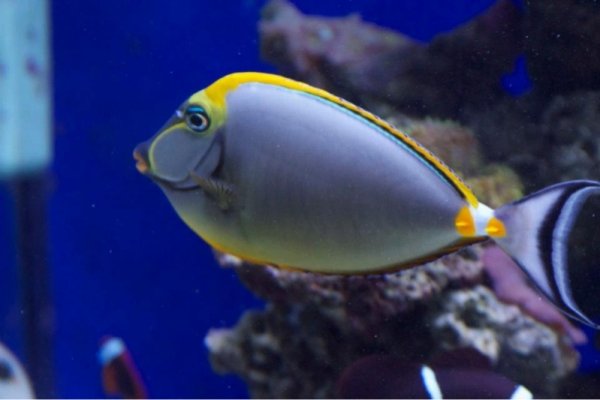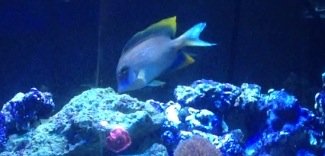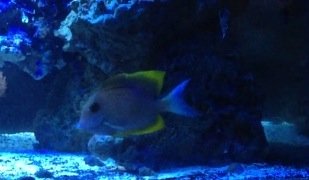Maintenance for the tangs or tank? And here's a print out for tangs....
Surgeonfish (tangs) are easily one of the more popular and recognizable marine fish. Most tangs are primarily herbivorous, roaming the open coastal reef while browsing for vegetation. These very active swimmers cover huge expanses of the reef while feeding.
Many species of tang adapt readily to aquarium life, and can safely be added to a a reef tank. The goal of a responsible aquarist is to provide the optimum environment for the inhabitants of our piece of the ocean. While an optimum environment may never be achieved, the Team RC community has compiled a list of minimum aquarium sizes for the various species of tangs commonly offered to aquarists.
These recommendations are based on the experiences of a myriad of aquarists, both real-life experiences and through observation in the ocean. They are based on the goal of providing an environment that matches the active nature, feeding regimens and growth rates of the tang. If this goal is met, the reward to the aquarist (and more importantly the fish) is long-term health and beauty in the tank.
It must be remembered that tank size is only one factor in the equation. It should be a "given" that the tank provides adequate mature rockwork for grazing, aquascaping that provides both hiding/resting spaces and allows for straight-line swimming in open water, and tank mates that are compatible.
Min Volume
Min Length
Species
Common Name
(gallons)
(feet)
Acanthurus achilles1
Achilles Surgeonfish
180
6
Acanthurus coeruleus
Atlantic Blue Tang
125
6
Acanthurus japonicus
Powder Brown Tang
125
6
Acanthurus leucosternon2
Powder Blue Tang
125
6
Acanthurus lineatus2
Lined or Clown Surgeonfish
240
8
Acanthurus nigricans
Whitecheek Surgeonfish
125
6
Acanthurus olivaceus
Orangeshoulder Surgeonfish
180
6
Acanthurus pyroferus
Mimic Surgeonfish
75
4
Acanthurus sohal2
Sohal Surgeonfish
350
10
Acanthurus triostegus
Convict Surgeonfish
125
6
Acanthurus tristis
Indian Mimic Surgeonfish
75
4
Ctenochaetus hawaiiensis
Chevron Tang
100
5
Ctenochaetus striatus
Striated Bristletooth Tang
75
4
Ctenochaetus strigosus
Kole's Tang
75
4
Ctenochaetus tominiensis
Tomini Tang
75
4
Naso brevirostris
Spotted Unicornfish
350
10
Naso lituratus
Orangespine Unicornfish or Naso Tang
240
8
Naso unicornis
Bluespine Unicornfish
350
10
Naso vlamingii
Vlamingi Tang
350
10
Paracanthurus hepatus3
Pacific Blue or Regal or Hippo Tang
240
8
Zebrasoma desjardinii
Indian Ocean or Red Sea Sailfin Tang
240
8
Zebrasoma flavescens
Yellow Tang
100
5
Zebrasoma scopas
Brown Tang
75
4
Zebrasoma veliferum
Sailfin Tang
240
8
Zebrasoma xanthurum2
Purple Tang
120
5
1 The Achilles Surgeonfish requires a very high flow level, and can pose even more health and feeding problems than other tangs.
2 These species can be exceptionally aggressive, and require careful planning.
3 These species are especially prone to infections, and should be watched very carefully in quarantine.[
__________________
Jonathan Bertoni




